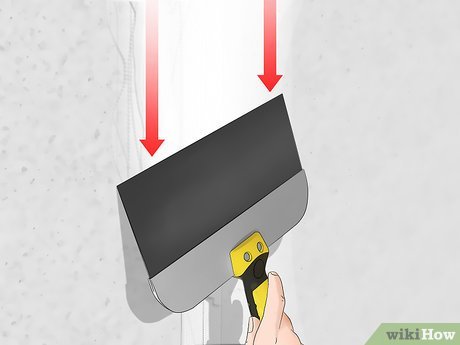To float drywall effectively, start by applying a thin layer of joint compound using a taping knife. Smooth out any imperfections by adding more compound as needed. Let it dry completely before sanding to achieve a seamless finish. Repeat the process for multiple layers, gradually widening the application area. Mastering how to float drywall takes patience and practice but yields professional results.
How to Float Drywall: A Step-by-Step Guide to a Smooth Finish
Welcome, DIY enthusiasts! Are you ready to learn how to float drywall like a pro? Floating drywall is a crucial step in the process of finishing walls before painting or adding texture. It involves applying joint compound to seams and screw holes to create a smooth, seamless surface. In this detailed guide, we will walk you through the steps to achieve a flawless finish on your drywall project. So, grab your tools and let’s get started!
Materials You’ll Need
Before diving into the floating process, make sure you have the following materials ready:
Joint Compound:
Choose a high-quality joint compound that is easy to work with and provides a smooth finish.
Taping Knife:
You’ll need both a 4-inch and a 10-inch taping knife for applying and smoothing the joint compound.
Sandpaper:
Keep a variety of sandpaper grits on hand to smooth out the dried compound.
Corner Trowel:
A corner trowel will help you achieve clean, sharp corners when floating the drywall.
Joint Tape:
Use paper joint tape to reinforce the seams and prevent cracking.
Drop Cloth:
Protect your floors and furniture by laying down a drop cloth before starting the floating process.
Step 1: Prepare the Drywall Surface
Before you can start floating the drywall, you need to prepare the surface. Start by sanding down any rough edges or high spots on the drywall. Use a sanding block to create a smooth and even surface for the joint compound to adhere to.
Step 2: Apply Joint Compound to Seams
Now it’s time to apply the joint compound to the seams between the drywall panels. Using your 4-inch taping knife, scoop out some compound and apply a thin layer over the seam. Press paper joint tape into the compound and smooth out any excess with your knife. Make sure the tape is fully embedded in the compound to prevent cracking later on.
Step 3: Fill Screw Holes
Next, fill in the screw holes with joint compound. Use the same 4-inch taping knife to apply a small amount of compound over each screw hole. Scrape off any excess compound so that it is flush with the drywall surface.
Step 4: Apply Second Coat of Compound
After the first coat has dried, it’s time to apply a second coat of joint compound. This coat is crucial for achieving a smooth finish. Use your 10-inch taping knife to apply a wider layer of compound over the seams and screw holes. Feather out the edges to blend the compound with the surrounding drywall.
Step 5: Sand and Smooth
Once the second coat of compound has dried completely, it’s time to sand and smooth the surface. Start with a coarse grit sandpaper to remove any high spots or imperfections. Gradually switch to finer grits to achieve a seamless finish. Keep sanding until the surface is smooth to the touch.
Step 6: Finish with Texture or Paint
Now that your drywall is beautifully floated and smooth, you can choose to add texture or paint. If you prefer a textured finish, you can use a texture roller or brush to create the desired effect. If painting, make sure to prime the surface before applying your paint color of choice for a professional-looking result.
Congratulations, you’ve successfully floated your drywall! With these step-by-step instructions and a little practice, you can achieve a flawless finish on your drywall projects. Remember to take your time, be patient, and enjoy the process of transforming your walls into a work of art. Happy floating!
Remember, practice makes perfect, so don’t be discouraged if your first attempt isn’t flawless. Keep honing your skills, and soon you’ll be floating drywall like a seasoned pro!
Drywall mudding 101
Frequently Asked Questions
How do you prepare the drywall before floating?
Before floating drywall, ensure the seams are properly taped and any screws or nails are countersunk. Use a utility knife to cut away any rough edges or ridges on the drywall surface for a smooth finish.
What tools are needed to float drywall?
To float drywall, you will need a taping knife, a mud pan, joint compound, sandpaper, and a drywall sander. Additionally, having a hawk and corner trowel can be useful for angles and corners.
What is the technique for floating drywall seams?
When floating drywall seams, apply a thin layer of joint compound over the tape using a taping knife. Feather out the edges to blend with the surrounding drywall. Allow it to dry before applying subsequent layers.
How many coats of joint compound are required when floating drywall?
Typically, you will need to apply three coats of joint compound when floating drywall. The first coat fills the gaps, the second evens out the surface, and the final coat smoothes everything for a seamless finish.
Final Thoughts
To float drywall effectively, start by applying joint compound with a taping knife. Smooth the compound using a drywall float in a feathering motion. Sand lightly between coats for a flawless finish. Remember, patience and practice are key to mastering how to float drywall.

